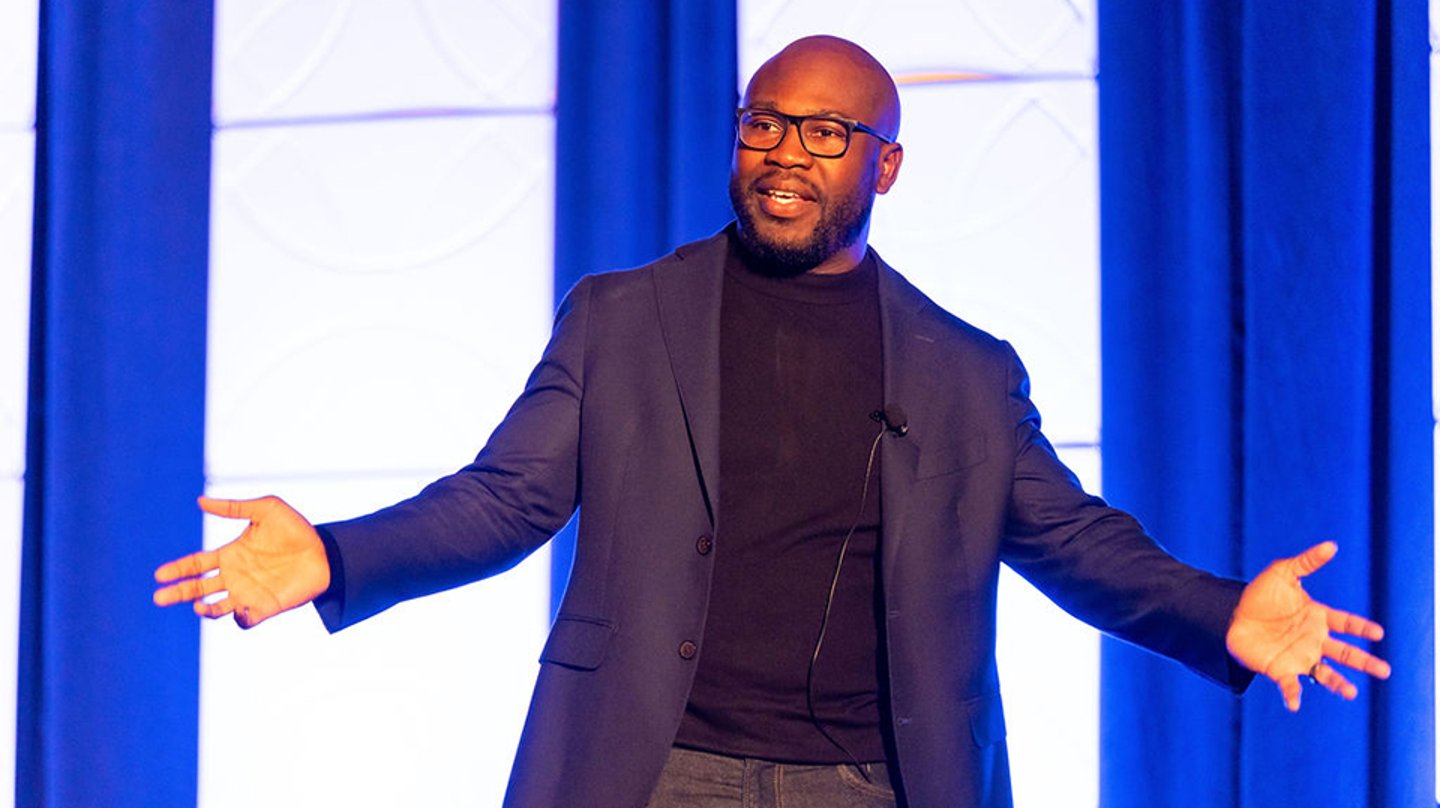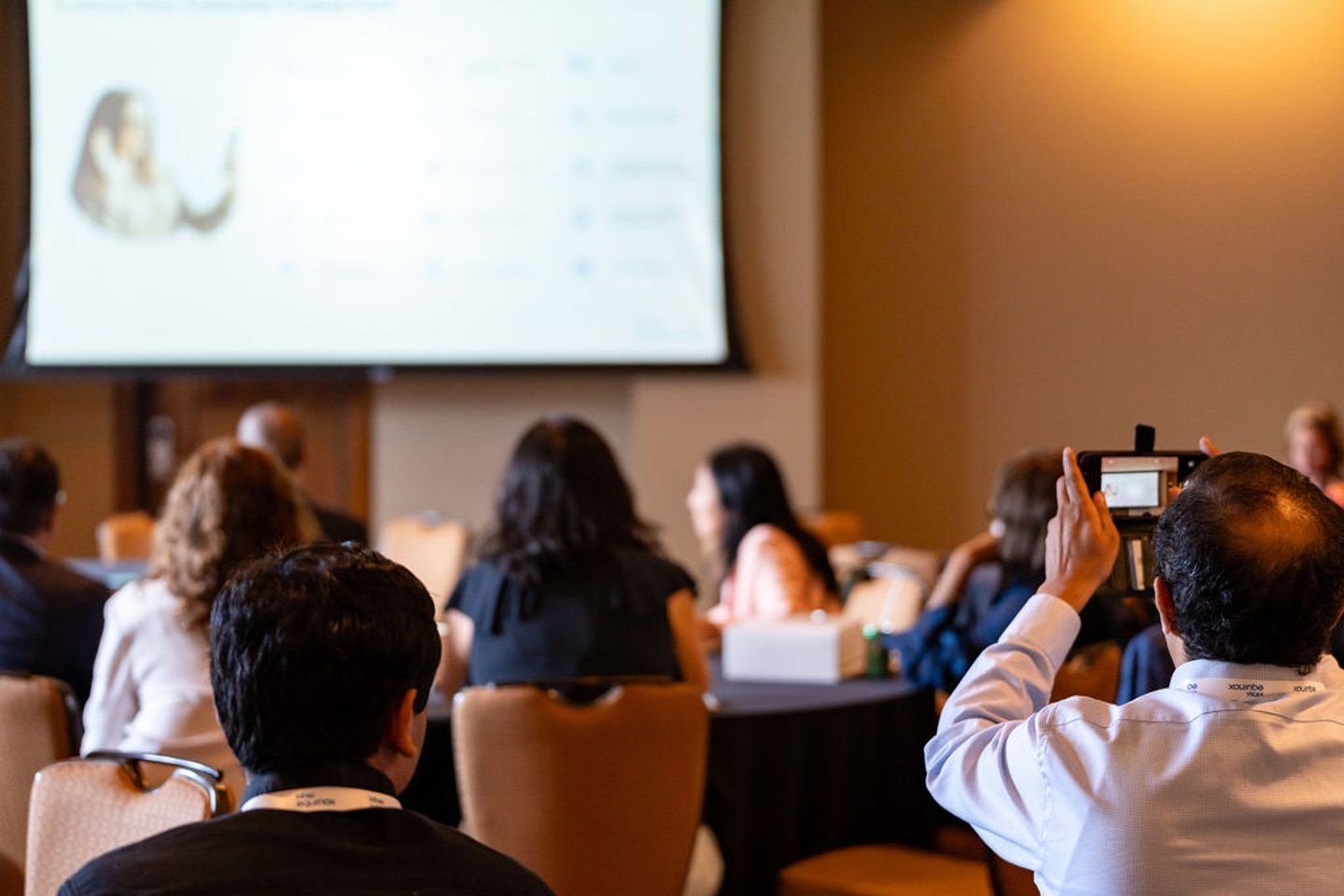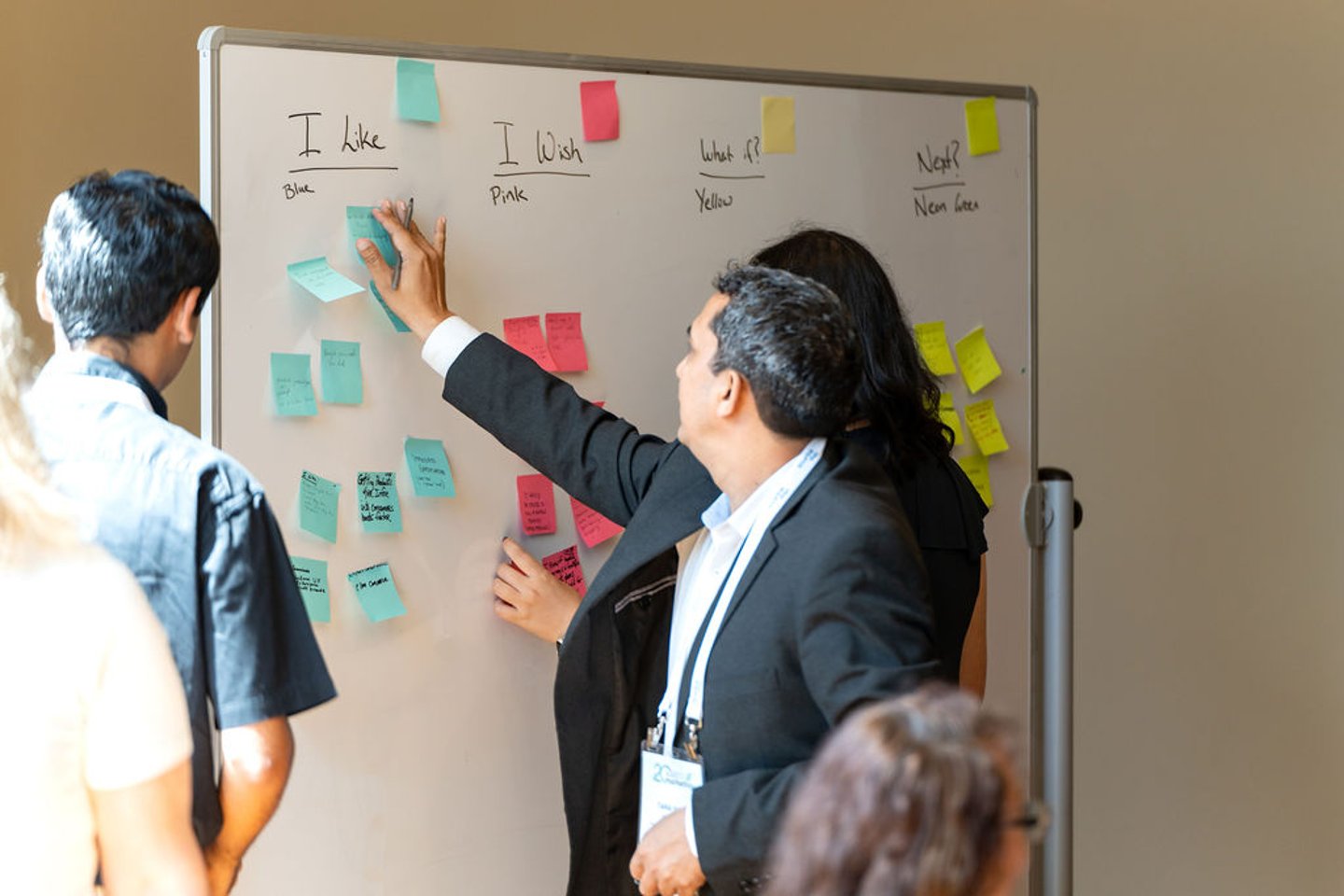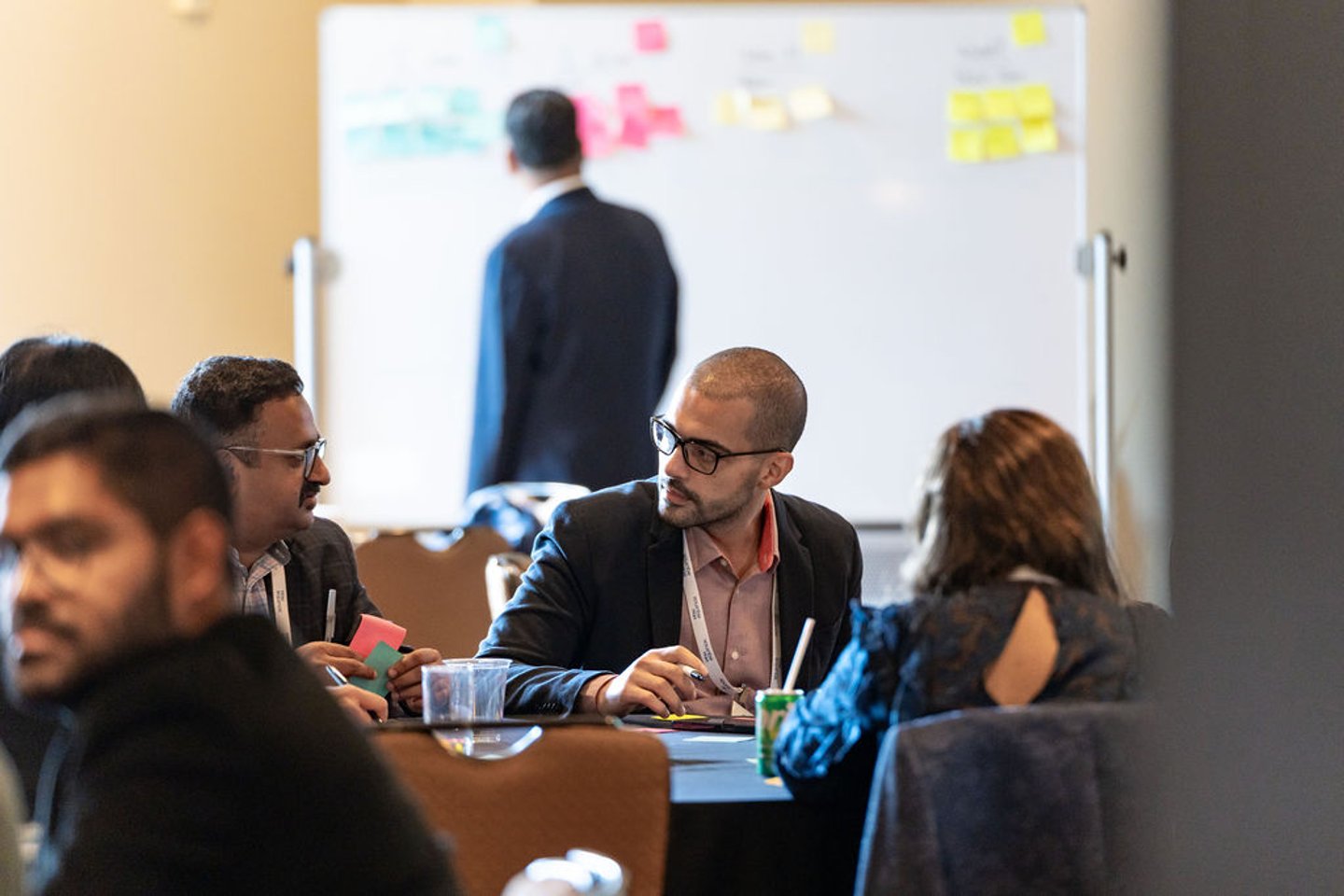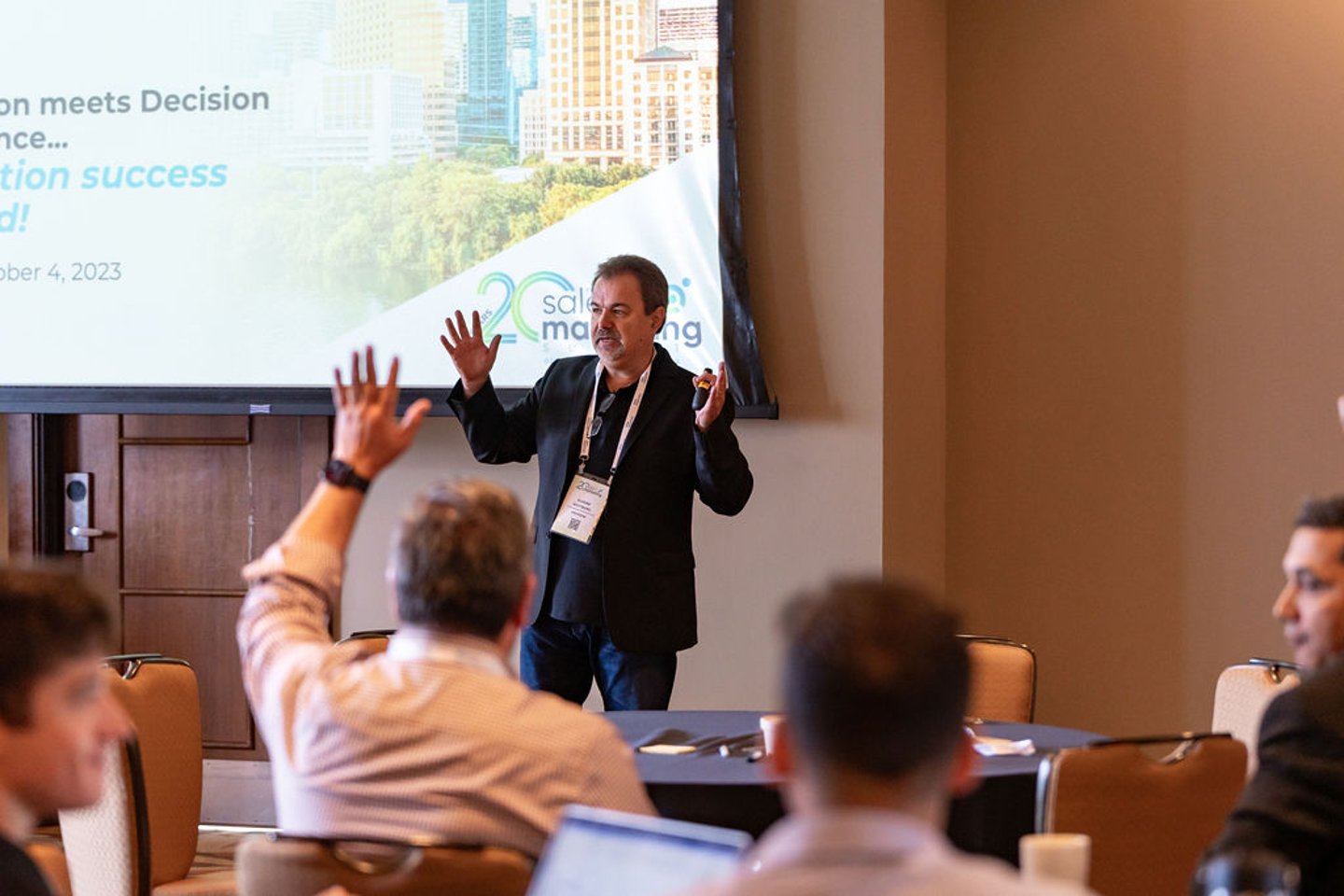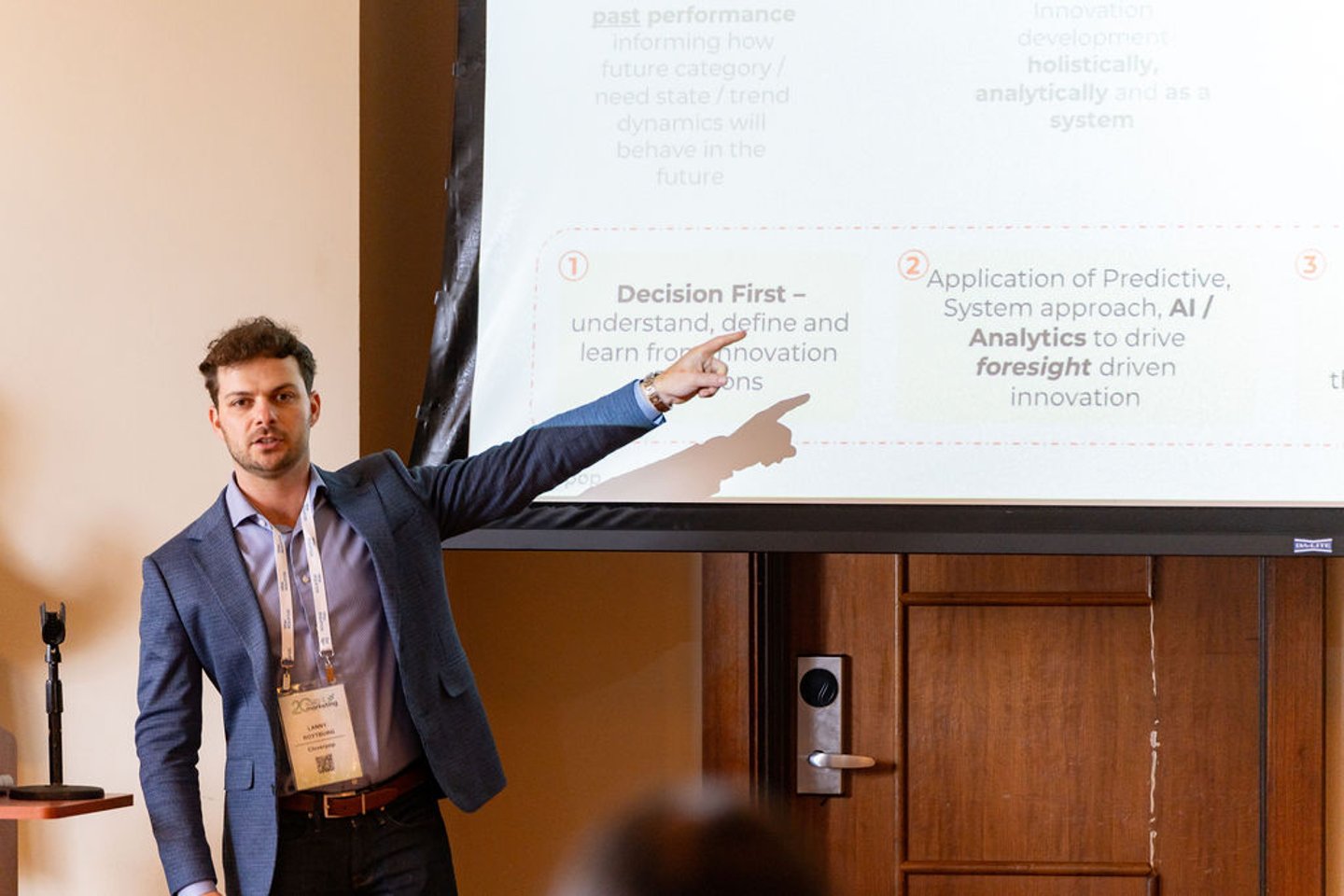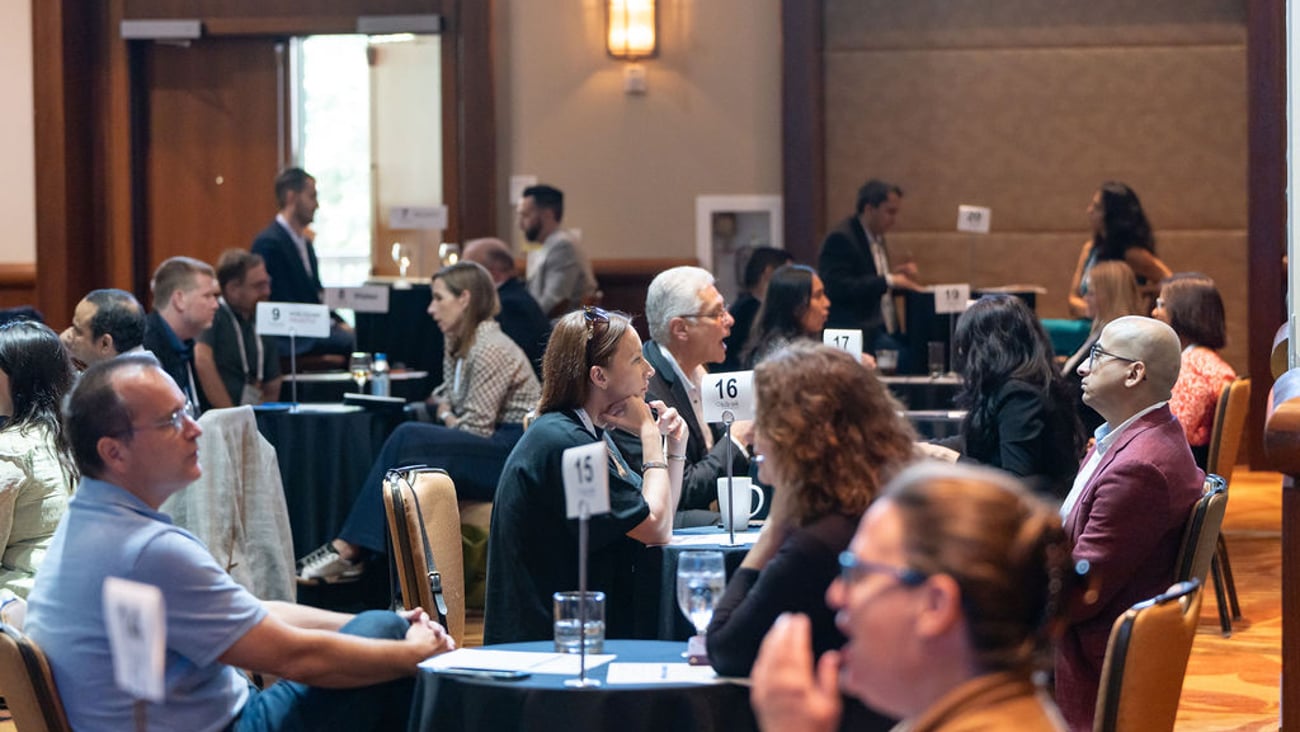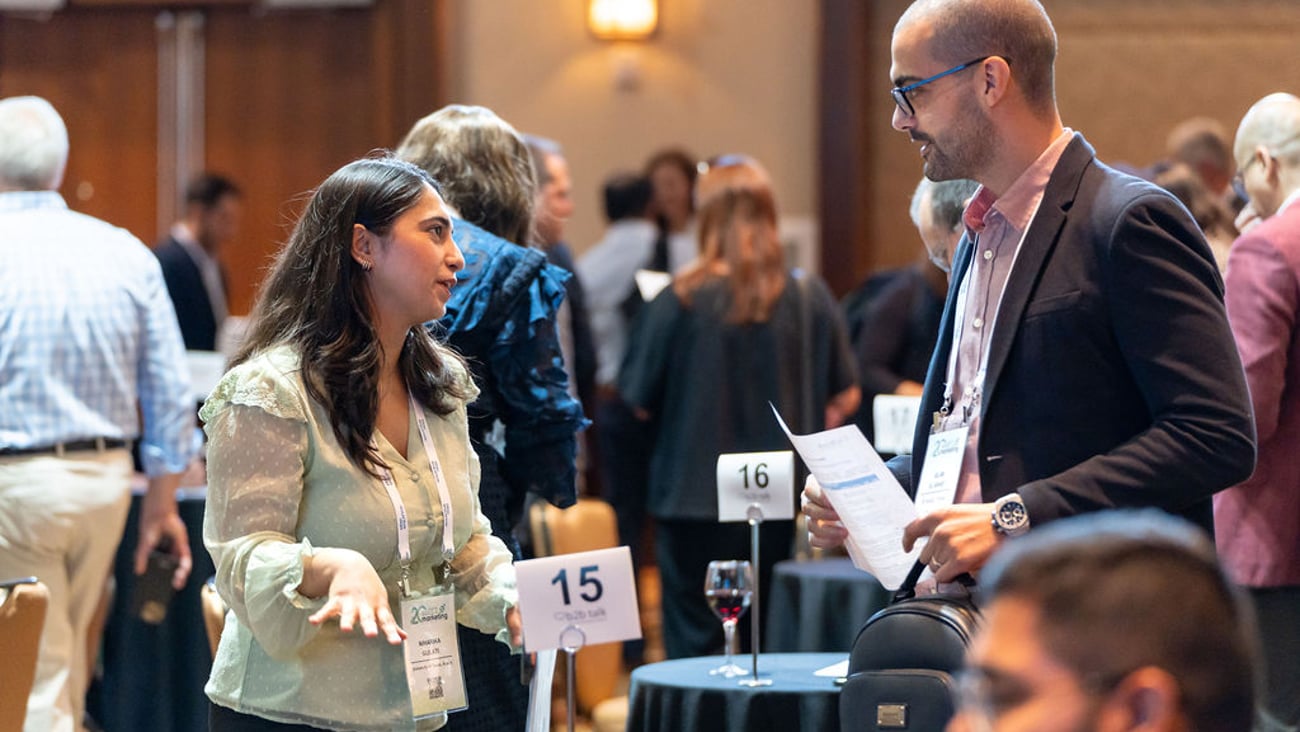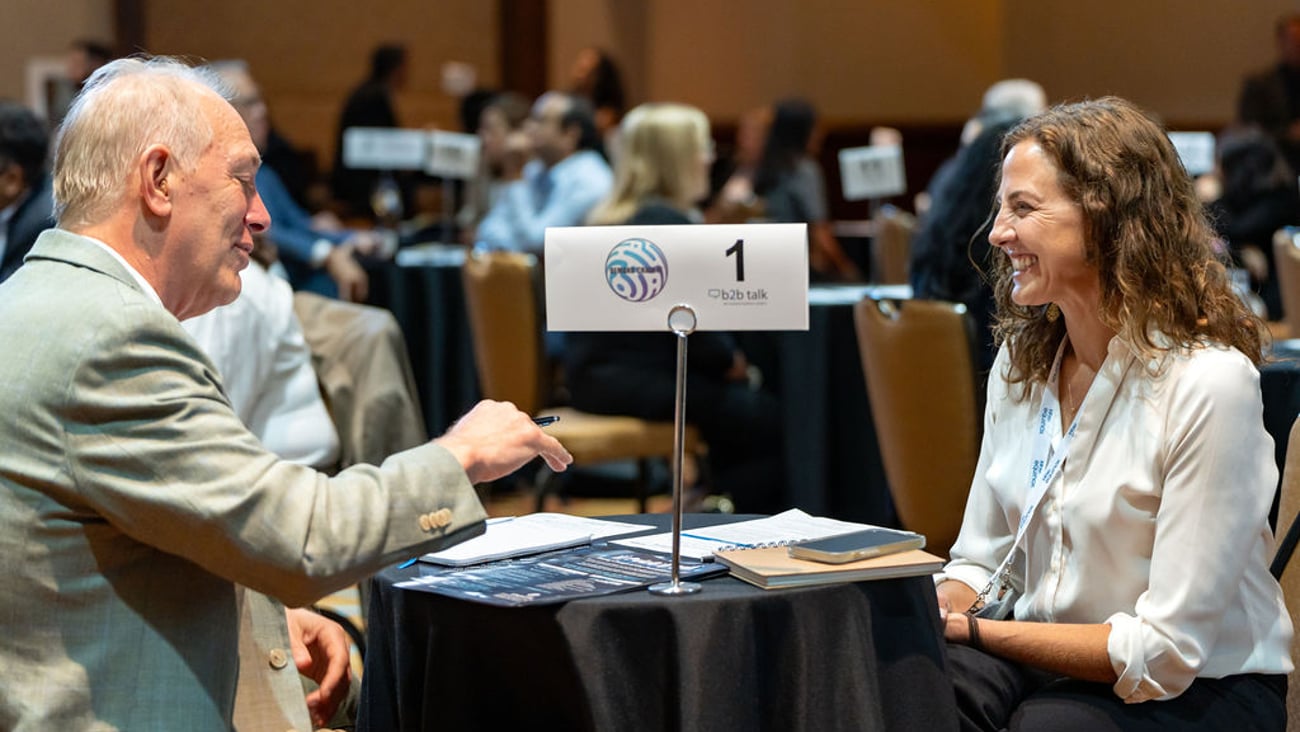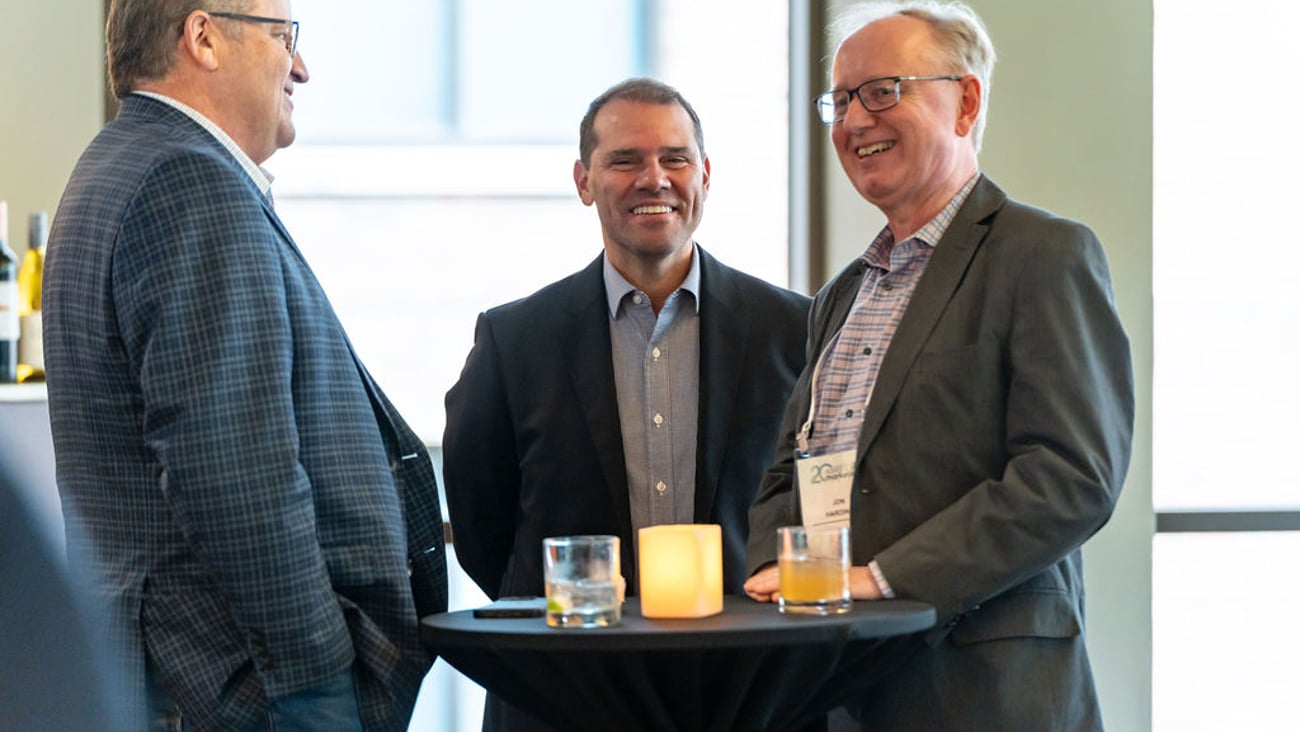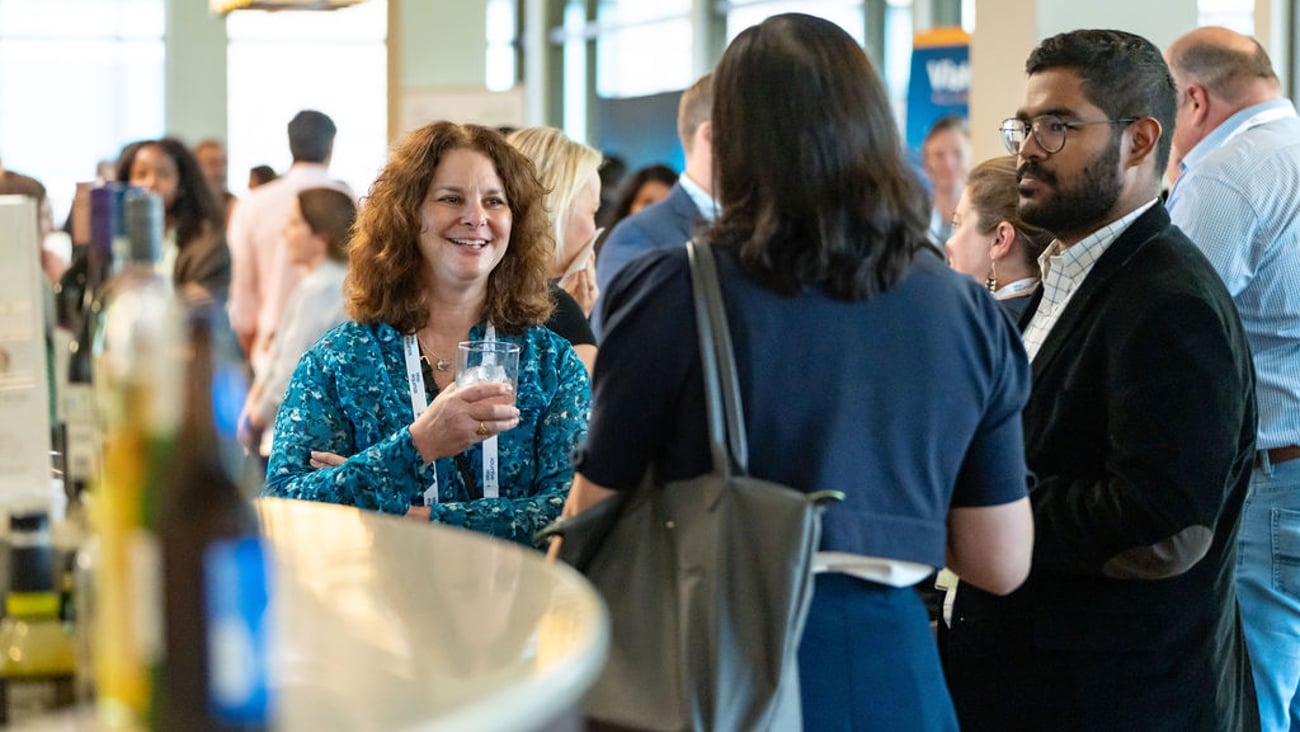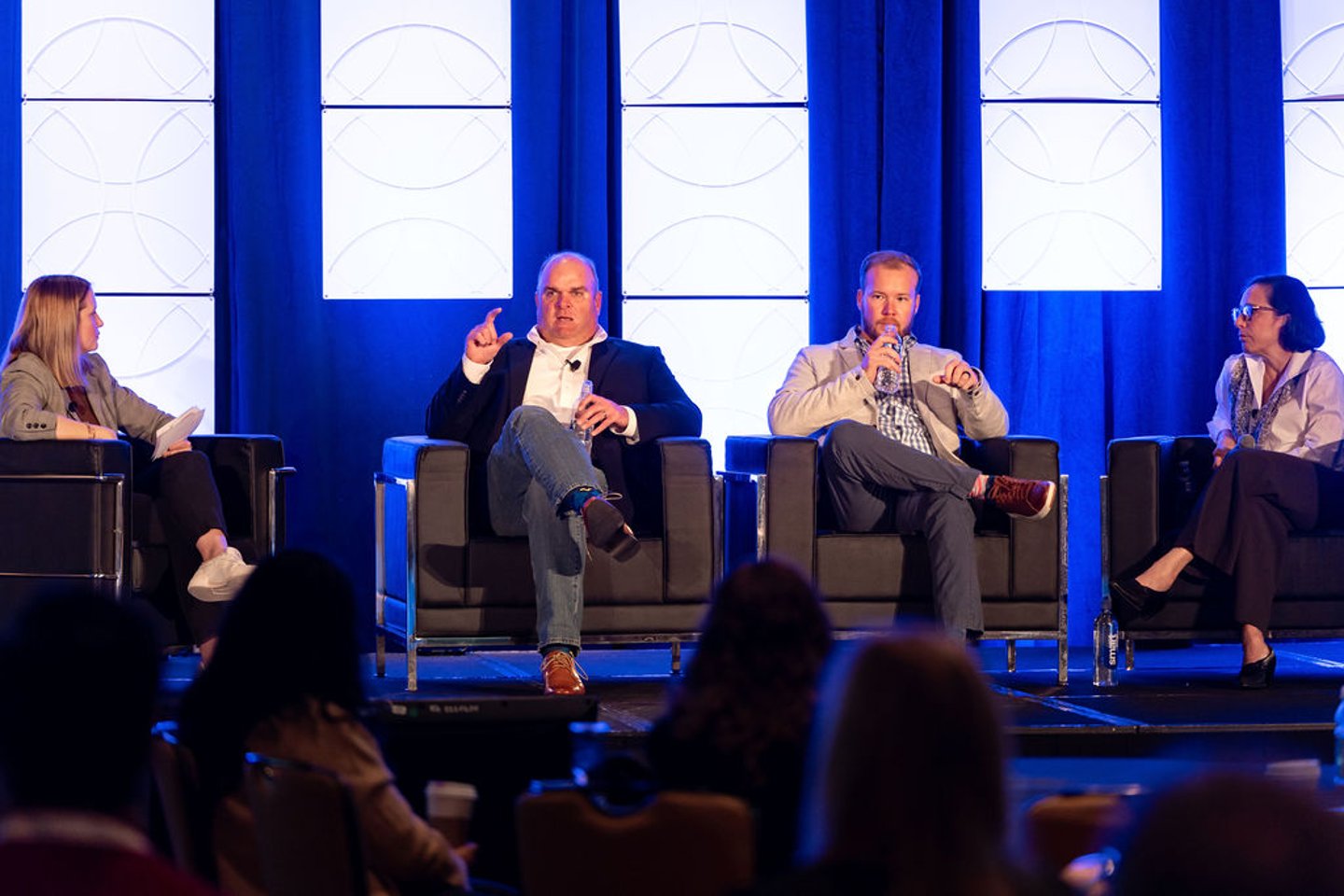The New Metrics of Innovation: Redefining Success at the 2023 Summit
The Consumer Goods Sales & Marketing Summit wrapped up earlier this month, gathering the industry’s leading experts in consumer goods and retail to discuss Redefining Success: The New Metrics of Innovation.
Attendees convened at the AT&T Hotel and Conference Center in Austin, TX, across three days of shared insight and best practices for gaining alignment on true business objectives and developing a tech roadmap to deliver on key KPIs.
We’re excited to provide highlights from all sessions below, with links to some of our expanded coverage.
Wednesday, October 4
Workshop: Defining and Exceeding the New Metrics of Innovation for DTC Commerce
Infosys’ Kunal Puri, VP and head of customer success, and Khurram Khan, CTO, led the kickoff to the Sales & Marketing Summit with an interactive workshop that “unpacked the DTC equation.” As the pair noted, the real value in going direct-to-consumer is not just about fulfilling a single order, but it’s instead about building lasting relationships, collecting the right data, and then leveraging them into actionable insights.
While DTC isn’t expected to become a replacement channel for consumer goods organizations, it is expected (by most organizations) to become profitable at some point. The workshop dug into some of the key factors that explore how to create a holistic cycle that fills in the gaps about the information being captured.
In this closed-door session, where attendees were able to speak freely, workshop participants exchanged frank perspectives on their current challenges and where they continue to see opportunities with DTC.
Share Group: Innovation + Decision Intelligence (IDI) Means Finally Improving Innovation Success!
The event continued its interactive start with a thought-provoking share group facilitated by Cloverpop’s Eugene Roytburg, CEO and co-founder, and Lanny Roytburg, co-founder and chief commercial officer. Roytburg opened by communicating the fact that a staggering 90% of product innovations continue to fail. There’s little doubt that organizations face significant challenges in innovation, including understanding evolving customer needs, aligning innovation with financial goals, and adapting to changing market dynamics.
A lack of a systemic approach, along with a failure to learn from the failures, is what often holds the innovation process back. This is where decision intelligence can have an impact.
To drive successful innovation, organizations need to consider a holistic approach, understanding not only current human needs but also broader perspectives, including environmental and societal aspects. By thinking of – or even combining – multiple need states, this approach can lead to breakthrough innovations.
Dynamic Conversations During Power Hour
Thursday, October 5
Keynote: From the Backfield to the Boardroom: Justin Forsett's Playbook for Unstoppable CPG Success
Former NFL running back Justin Forsett kicked off Day Two with an inspiring and entertaining keynote that took attendees through learnings stemming from his tumultuous childhood and career across seven teams, including some of the darkest and most difficult days. At the heart of the message was a challenge to attendees to examine how they respond to obstacles when things aren’t going their way, emphasizing that “greatness grows best in the shadows.”
As the CEO and co-founder of personal hygiene brand Hustle Clean, Forsett’s pro athlete career may be unlike most in the room, but his lessons for confronting hurdles in business were authentic and relatable.
“Are you allowing these bits of adversity to cause you to stop?” he pushed the audience. “Or are you allowing it to push you toward success?”
Over the hour-long talk, Forsett offered a number of key takeaways:
- Excel at what you can control: attitude, effort, preparation.
- Build a huddle of those who will support, encourage, and challenge you.
- Serve those around you. The path to success is muddy.
“This industry has been able to overcome a lot throughout the course of human errors and years and generations of adversity and opposition. We find ways to innovate, navigate, and adapt. We're a resilient group. We're not going anywhere, any time soon,” said Forsett. “But the only way that we're going to find success moving forward and leading to changes that are more collaborative, we're partnering with one another. We're not isolating ourselves from finding ways to create new experiences for our customers and our clients. This is how we're going to level up.”
Redefining Success: The New Metrics of Innovation
A powerhouse panel of CIOs joined Albert Guffanti to explore the event’s theme: Redefining Success: The New Metrics of Innovation. Jon Harding, SVP and global CIO, Conair; Kevin Gokey, SVP and global CIO, Church & Dwight; and Tony Bender, SVP and CIO, Culligan, discussed implementing crucial new metrics and executing strategies that have led to genuine innovation in their respective companies.
In defining innovation, Gokey pointed to a number of key features: "Innovation for us covers product line extensions, relationships with retailers, our ability to compete without creating conflict, and really being able to differentiate."
However, effective innovation requires calibration, said all three CIOs. “Alignment is really key,” Harding shared. “We've got multiple business units and one centralized point ...That alignment is making sure that everybody understands what's working and what's not.”
As the “sanity-keepers” within their organizations, CIOs are often tasked with balancing full-throttle innovation with business needs and alignment. In terms of innovation, the panelists emphasized the importance of data, AI, and machine learning in shaping their strategies, emphasizing how innovation was not just about product development but also about process improvements, especially in areas such as supply chain management and individualized shipping.
For Bender, innovation ought to be a value-creator. “Focus on innovation that's going to drive value. Connect the dots. Make sure that whatever it is that you're doing, it has value creation, and don't focus just on technology. When it comes to the process, take into account people and teams and technology. All three of them are required elements for whatever journey you're going to make. But value creation is so important in the roles that we're in.”
Delivering Profitable Growth With Exceptional Customer and Consumer Experiences
With the ROI on traditional media and trade spend changing, today’s consumer goods companies must find new levers of driving growth. Planning remains a significant struggle for CGs, with 55% lacking trust in their sales forecast, according to Devin Kunysz. industry go-to-market senior director at Salesforce.
Kunysz and Najah Phillips, Salesforce senior product marketing manager, led attendees through some of the steps consumer goods companies can take to drive productivity and growth in retail execution by unifying their data and platforms. As part of this, Raymond Brown, Pepsi Beverages North America senior director strategy and transformation, joined a fireside chat facilitated by Jerry Schorn, Salesforce SVP, consumer goods, to provide a window into PepsiCo’s digital transformation journey.
Brown discussed some of the steps taken in evolving their retail execution teams from paper-based methods to cloud-based systems. The switch resulted in dramatic customer acquisition gains for the CPG, but it also required a tremendous amount of change management and new ways of working. While obtaining stakeholder buy-in may be a time-consuming process, doing this hard work was ultimately critical to their success.
“In a big company, everybody's competing for capital,” Brown noted. “We had to spend a lot of time explaining the rationale of the growth potential that comes from CRM.”
The other ingredient in their recipe for success was being deliberate in how they stacked their agile teams, ensuring to have a mix of both business and technical stakeholders.
“We have in those teams business experts, and that was critical for us,” said Brown. “They don't wonder how a process should be done. They don't have an ivory-tower thought about how the work can get done. They know how it's getting done and how to make improvements to it. In working with technical people, they were able to specify those features correctly, and they had this fantastic empathy for the people they were trying to help. And that really let us build this fantastic quality product that people were clamoring to use because it was such an enjoyable experience.”
Consumer Trust in a World of Generative AI
Ken Sickles, EVP, chief product officer, Digimarc, delivered a timely presentation on building trust with generative AI. A topic on everyone’s minds at the summit, generative AI allows for the creation of new content, including images, audio, and videos. While making space for immense opportunities, the rise of generative AI has also led to a crisis of trust, with 62% of people feeling that the social fabric holding their country together can no longer be trusted due to misinformation and fake news online, Sickles shared. In this environment, “trust is the KPI that we have to think about today.”
Going on to highlight examples of AI-generated content, Sickles demonstrated just how easy it had become to create fake news images and manipulated photos of public figures.
The solution to this crisis partly lies in building an "ecosystem of trust" in the digital world, Sickles said, which will primarily be achieved through transparency and increased standardization. Regulatory efforts and industry initiatives are underway to address the crisis of trust, with standards being developed for authenticating digital content in a similar way to the systems currently authenticate currency.
These efforts have become a matter of global interest and urgency. “We already know that China has made it illegal to create generative AI content without a clear label or a watermark of some sort. Labeling that content is being generated by AI went into effect in January of this year. The U.K. has legislation and new regulations that will be issued by the end of the year. The EU also has regulations that will be issued by the end of the year. South Korea is working on regulation. The Biden administration is working on regulation. I've had the fortunate pleasure of being able to interact with many of our legislators in Washington about how they can develop that ecosystem of trust,” Sickles shared.
Unpacking Retail Media ROI With Colgate-Palmolive & Hero Cosmetics
The explosion of retail media networks (RMNs) is a significant opportunity for the consumer goods industry, but that doesn’t mean manufacturers are always having an easy time of things.
There are currently more than 600 RMNs currently in existence, according to Elizabeth Lafontaine, chief retail analyst of EnsembleIQ, in citing the Walton College of Business, and they generate anywhere from 70-90% profit margins compared to traditional retail categories of 20-40%.
RMNs have yet to reach their full potential, however. Joining Lafontaine at the Summit to explore the challenges consumer goods companies are facing were Cherie Leonard, senior director of North America insights for Colgate-Palmolive, and Aaron Mizrahi, director of Amazon at Hero Cosmetics.
For Kellanova & Nanit, Collaborative Commerce Unlocks New Opportunitie
As the post-pandemic retail landscape continues to morph, consumer goods companies must think more creatively than ever to keep both their consumers engaged and their retail partners satisfied across all channels.
While myriad obstacles abound, those finding success in the evolving environment are doing so thanks to both internal and external innovation via collaborative partnerships.
“We're all consumers ourselves,” said Quynh Dang, Nanit VP of brand. “We've felt it, and we're spending differently as a result. It's really the brands who did rise up and the retailers [and] the spaces that have continued to succeed that really offer something unique.”
Panelists acknowledged a holistic approach is required for manufacturers to thrive in today’s economic environment, with collaboration and communication between channels key to the approach. In explaining how Kellanova, formerly Kellogg’s, brought brand priorities to life, TJ Hanel, director of omni e-commerce demand and platform lead, described it as a layer approach in pursuit of a middle ground.
How Coty, Diageo & Whirlpool Connect the Dots For Immersive Experiences
For consumer goods manufacturers, leveraging data and analytics in the development of the right immersive and distinct experiences is just the first step; properly disseminating these insights across the enterprise to unlock their potential is just as critical.
At Whirlpool, this means transforming home utilities through a diverse portfolio of brands like KitchenAid, Maytag, and others, while also delivering an effective customer experience.
Sunny Yurasek, Diageo senior director of data and analytics, agreed, noting the spirits company is diversifying the types of alcoholic beverages they offer, having acquired over 25 brands in the past few years alone. This, she said, is part of a careful process of analyzing customer demand based on their age, region, time frame and current trends.
Cheers to 20 Years!
Friday, October 6
Sales & Marketing Study Breakfast Panel
A trio of consumer goods experts kicked off Day 3 by providing deeper perspectives into some of the context surrounding CGT’s Sales & Marketing Research Report, published earlier this month. Panelists walked through some of the key themes of the report and discussed how they aligned with both the Summit and the larger industry they’re seeing in the industry.
For example, sustainability is listed in the report as the top strategy that’s expected to influence the consumer goods industry over the next 12-18 months. While that might have been surprising when the Summit got its start 20 years ago, it’s quite fitting now, noted Douglas Remick, senior sales director, North America, Ivy Mobility.
Manufacturers continue to invest in data optimization and data science, which are extremely important given the fluctuation and volatility in today’s marketplace. “It’s important to understand the predictability of your volume will perform basic versus merchandising conditions and allow that information to pass through the supply chain,” Joel Cartwright, industry principal at Vistex, pointed out.
Irene Sibaja, industry principal at Treasure Data, in turn, highlighted the growth in the need for loyalty and personalization — an aspect that stood out to her in no small part because “it’s directly proportional to where we know third-party data is going.”
In examining modern new innovation metrics and definitions of success, Sibaja noted that today’s companies must make decisions about products more quickly than ever before. “The product life cycle is short. Things are flipping much more quickly, and there's immense fragmentation in brands,” she said. “To get to that top-line revenue growth, you have to quickly make decisions about what's working, what's not working, and are we in or are we out? Being able to do that well is what will drive success.”
Cartwright echoed this, noting that he’s hearing a lot of requests for “reactionary KPIs” so that manufacturers can better understand some of the external factors impacting results.
Naturally, the panel also touched on generative AI, with the general sentiment agreeing that while it’s still in its infancy, the technology can already give execs a head start on their tasks.
“Whether it's giving you cleaner, better information initially, or it's getting you that first draft completely done, that's time and money that you no longer have to spend,” said Remick. “So you're starting your day where you would have been halfway through the day. You have the rest of that time as your own. What are you going to do with it? And how are you going to make the best use of it?”
Go Beyond the Buzz of Gen AI: Drive Real Business Impact and Disruptive Innovation
It’s probably clear to most in the industry that generative AI is going to have a fairly large impact on our lives as consumers, but also on our businesses, said Kalindi Mehta, VP, consumer foresight and predictive analytics of The Estee Lauder Companies, as part of a presentation on the technology.
Gen AI is well suited to meet several business challenges, she explained. For example, large CPG companies are swimming in data and are competing against smaller brands that are able to answer consumers’ need for personalization better. Global brands also face the business challenge of managing insights from numerous markets, and in turn, building content and assets in multiple languages.
“We have been talking about data and analytics as a point of competitive advantage for years,” Mehta said. "Gen AI really allows us to make it a true competitive advantage. What very few appreciate is just how data rich legacy and big beauty companies like the Estee Lauder Cos. are. With AI, this richness of data can really be transformed into a distinct advantage, versus newcomers versus indie brands or small players.”
Building a True Transformation Roadmap
Chidi Alams, CIO of confectionery manufacturer Just Born, closed out the Summit with a fireside chat with Albert Guffanti, VP of EnsembleIQ’s Retail Technology Group. Alams shared insight into how his experiences as CIO of Jiffy Lube have informed his approach to the business transformation strategy currently underway at Just Born. He also discussed the steps and processes that are underway at Just Born as they develop new digital muscles, form new ways of thinking, and establish key new measures to align with.
“Context is a really important part of transformation,” said Alams. “Often what happens is context and strategy get clubbed together or get conflated. And they're certainly related, but they are separate and distinct.”


